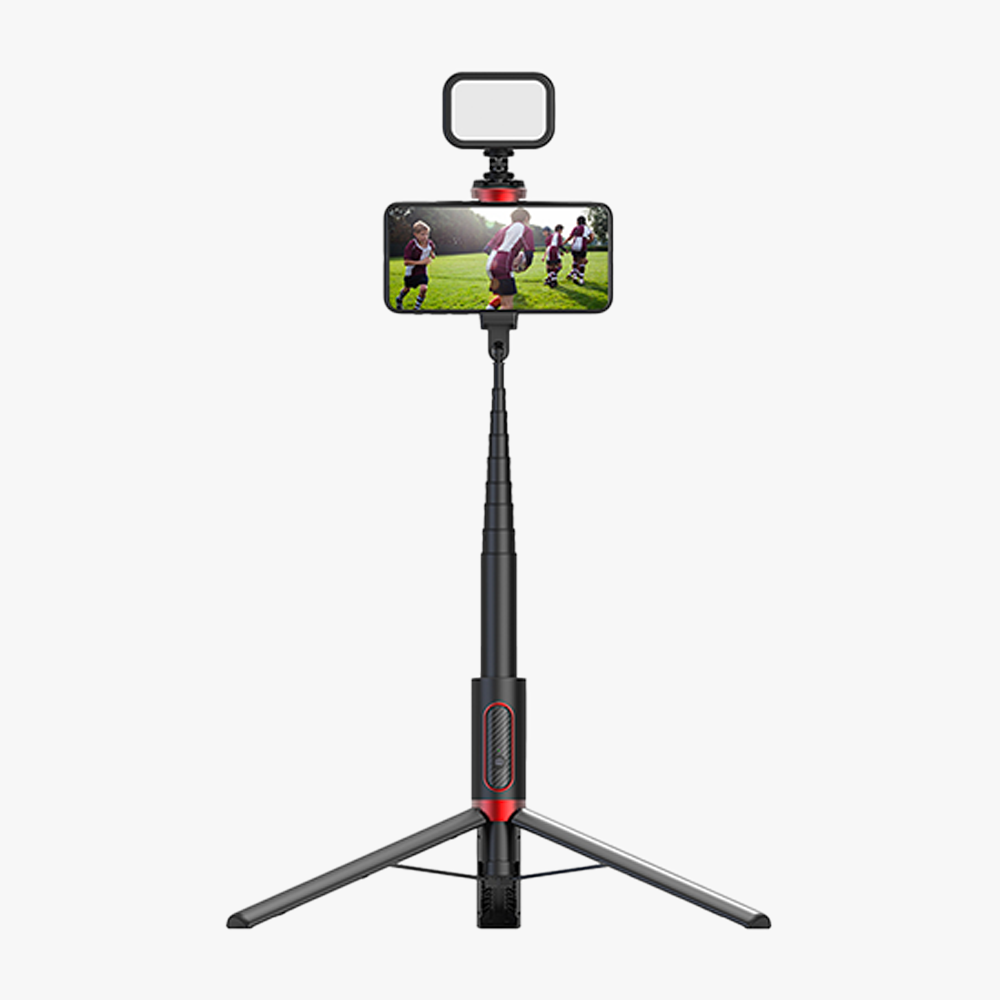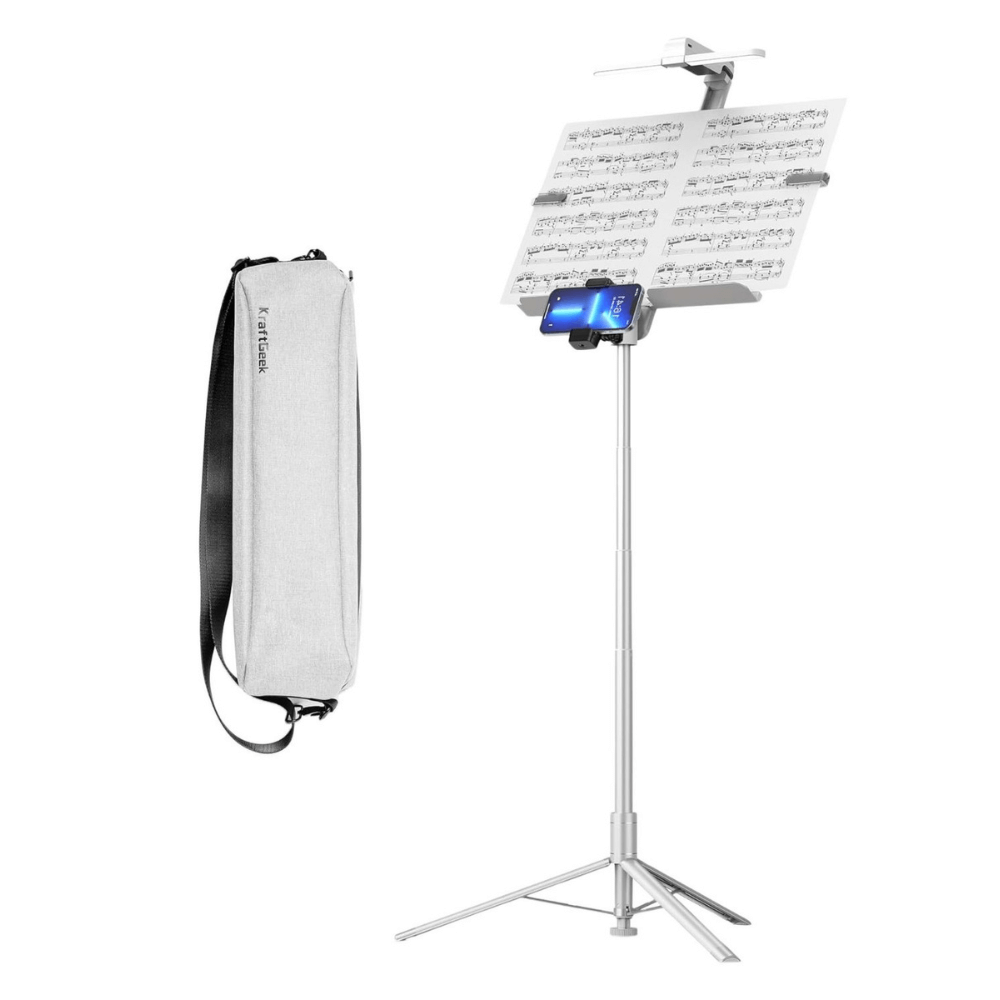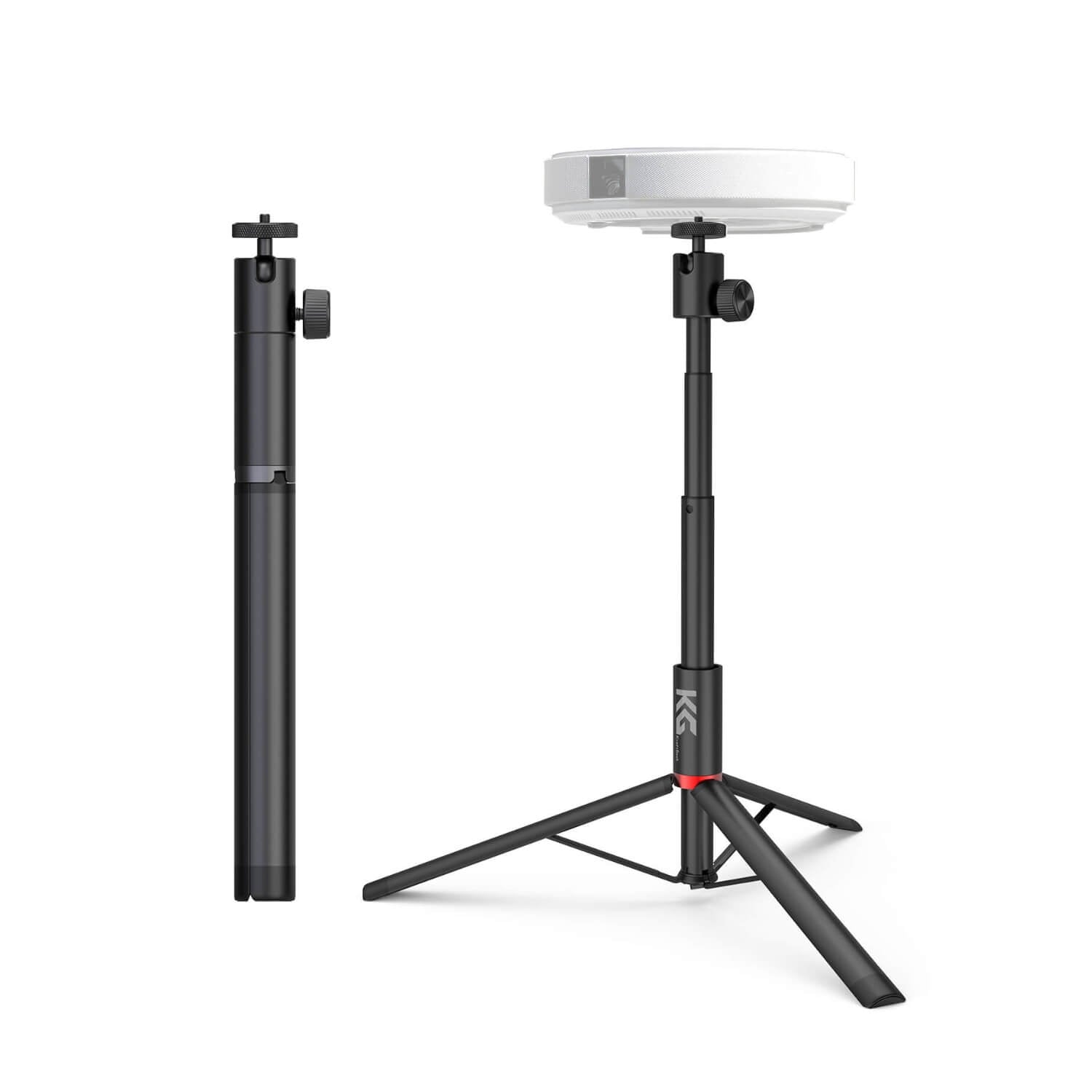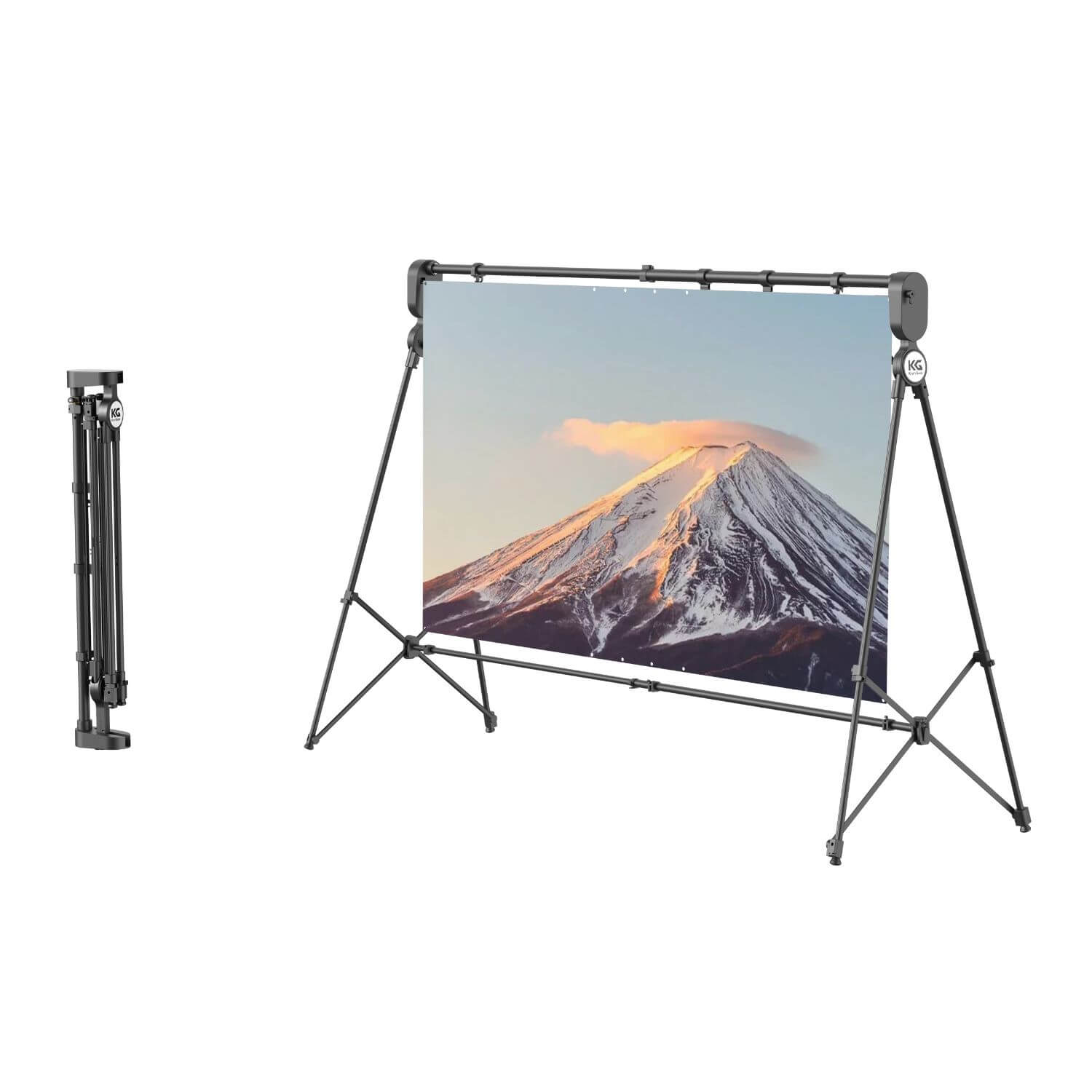Two essential tools in the camera technology industry are the tripod and the gimbal which stand out as indispensable for achieving stability and unlocking dynamic shots. This blog seeks to guide readers through the fundamental differences between tripods and gimbals, establishing a foundation for understanding their respective applications.
What Is A Tripod?
A tripod is a three-legged support for cameras or other equipment, intended to make them steady and exclude uncontrolled movements. Normally made of plastic or metal, tripods are available in numerous configurations including substantial versions with solid leg for pro work to the smaller types that adjustable and easy attached on furniture’s surfaces.
The main function of a tripod is to serve as an anchor for the camera such that it remains stationary during exposure. It is priceless in cases such as long-exposure photography; any slight camera movement leads to a blurry photo. Tripods are widely used in photography and videography as they provide stillness, stability, precise framing.
Types Of Tripods
- Camera tripods.These tripods were created with photography in their mind to give it the stability for still shots. They shine in situations where long exposure photography is important, meaning that the camera stays still to provide clear images.
- Video tripods.Tailored for videography, these tripods cater to the dynamic nature of video recording. They offer stability for stationary shots and enable smooth panning and tilting, contributing to a polished and professional look in video content.
- Vlogging tripods.Vlogging tripods are travel-friendly and have portability and versatility as well. They are always compact, and transportable and come with folding legs that make it possible to take photos in all settings. These may even have special elements such as articulating legs that allow them to be fitted onto different surfaces and so guarantee vloggers are able to cope with the difficulties of mobile filming.
What Is A Gimbal?
A gimbal is a type of mechanism that commonly employs rings pivoted at right angles to allow an instrument, such as a camera, to remain horizontal in the face of movement. Today, gimbals are integral to contemporary camera equipment; they allow for smooth and stabilized shots even in rapidly moving and unpredictable settings.
Gimbals are made from a blend of plastic and metal and use gravity or weight to keep the camera stable as it moves in different directions. In contrast to tripods, gimbals are capable of supporting moving operations such as panning; tilting and even more complex rotation movements. They have electrical elements, like servo motors that combat the vibrations and for a smooth shooting session.
Considerations When Buying A Tripod
1. Materials
- Widely used in tripod manufacturing, aluminum provides a compromise of strength and lightness. Aluminum tripods can be significantly cheaper and still versatile for various purposes.
- Carbon Fiber. Because they are light and strong, professionals prefer carbon fiber tripods. They offer amazing vibration isolation and are suitable for those who value mobility.
2. Pricing
- Entry-Level Tripods.While these may not have some of the more advanced features, they form a good starting point for basic photography or videography needs.
- Mid-Range Tripods.With an aim to strike a balance between affordability and quality, mid-range tripods have more features and durability than entry level offerings. They are appropriate for hobbyists who wants better performance.
- Professional-Grade Tripods.Professionals and serious enthusiasts opt for high-end models of tripods. They are made of premium materials such as carbon fiber, which provide sophisticated features, better stability and longevity.
3. Height and Stability
Make sure that the tripod can reach a height that makes you comfortable in shooting without sacrificing its stability. To ensure that this does not happen, look for strong legs with secure locking systems.
4. Quick Release System
It is advised to go with a tripod that has a quick-release system for ease of connecting and disconnecting your camera. The quick-release mechanism saves time in setting up and secures the association.
Considerations When Buying A Gimbal
1. Payload Capacity
Payload capacity means the maximum load-bearing ability of the gimbal. Make sure that the gimbal has sufficient capacity to carry your camera along with other complementary accessories, like lenses and mics. Having a gimbal with higher payload than your current setup gives you the opportunity to upgrade some of the equipment in future.
2. Battery Life
Any gimbal that has a battery that fits your shooting specifications is also worth considering. Some models provide replaceable or swappable batteries, which means that you can have several spare ones to last through longer shoots.
3. Gimbal Type
Different types of gimbals include handheld, wearable, and drone-mounted gimbals. Pick the one that suits your shooting style and requirements.
4. Modes and Features
Different gimbals offer various shooting modes and features. Common modes include pan-follow, lock, follow, and POV modes. Consider the specific shooting styles you plan to employ and choose a gimbal with modes that enhance your creative possibilities.
5. Portability and Weight
With outdoor or mobile shooting in mind, the portability of the gimbal becomes crucial. Pick a gimbal that is small and portable. Travel would benefit from it because it can be folded or collapsed.
6. App Integration and Controls
Many modern gimbals come with companion apps that allow for remote control, firmware updates, and additional customization. Check if the gimbal offers intuitive app integration for seamless control and configuration.
When To Use A Tripod?
1. Long Exposure Photography
In long exposure photography where the shutter of the camera stays open for a very long time, stillness is critical. Any motion during this period can lead to unclear pictures. When taking scenes like star trails, light painting or landscape images where a long exposure is required then the use of camera tripod becomes absolutely essential.
2. Still Shots and Portraits
In situations where the objective is to capture a static scene or a portrait with precise framing, a tripod ensures the camera remains perfectly still. Portrait photography, studio shots, or scenarios where maintaining a consistent composition is essential benefit from the stability offered by a camera tripod.
3. Controlled Panning and Tilting
While videographers often opt for dynamic motion, there are situations that demand controlled and deliberate panning or tilting. Establishing shots in movies, architectural videography, or capturing a sweeping landscape with controlled movement benefit from the precision of a video tripod.
4. Product Reviews and Demonstrations
Vloggers showcasing products or demonstrating techniques often require a stable platform to keep the focus on the subject. A vlogging tripod provides the necessary stability for clear and detailed product reviews or instructional content.
When To Use A Gimbal
1. Dynamic Movement and Action Shots
A gimbal is required when a dynamic movement, rapid action, or detailed choreography has to be recorded. Gimbal has a smooth motion, which means that it is suitable for sports videography and dance performances as well as other scenes where the camera needs to follow unobtrusively.
2. Cinematic Filmmaking
In order to create cinematographic quality, filmmakers frequently use advanced camera movement techniques such as tracking shots dolly zooms or crane like motions. These high-end cinematic techniques are enabled by using gimbals that enhance the professional look of narrative storytelling and creative filmmaking.
3. Wildlife and Sports Photography
If shooting subjects in motion is critical, such as wildlife or sports photography, then a gimbal provides the required stabilization. A gimbal helps wildlife photographers following an animal or a sports photographer that needs to capture fast actions.
4. Filming in Tight Spaces
In scenarios where space is limited, and traditional filming setups may be impractical. Gimbals provide a compact and versatile solution for shooting in confined spaces, making them ideal for content creators working in diverse environments.
How To Use Tripods And Gimbals Together
Although each of them serves a different purpose, the fusion of characteristics gimbals as well as tripods offers a total approach to visual narration.
- There are tripod mounts or adapters on most camera gimbals which makes it easy to switch between the two models. Also, securely fasten the gimbal to a tripod through the designated mounting points for proper stability especially on static shots or none-moving setups.
- For capturing of scenes that require complete steadiness without compromising any benefits offered by a compatible gimbal stabilization, mounting a tripod on the gimbal is ideal. This configuration is especially useful for cases of interviews, news reporting, or any situation where the camera may not have to be moved but can still benefit from the gimbal attenuation functions.
- Some gimbals can be controlled wirelessly and incorporate app-integration so you can control it from a distance while on the tripod. This feature boosts the dynamism allowing creators to modify, turn corners and even start motion without contacting the gimbal.
- Set the tripod to the perfect height and framing for your shot, then add a gimbal for simple panning or tilting. This method is beneficial when you need the stability of a tripod and also wish to have some camera movement for visual interest.
- Gimbals can have issues with heavier camera setups, especially when more accessories are attached for professional videography. The gimbal’s mounting on a strong video tripod gives stability, meaning that the combined weight of the camera and gimbal is well-supported.
Product Recommendations:
FAQ
Q: can gimbal be used as tripod?
A: Some gimbals can be used as tripods. It depends on the functions of the gimble. Please inquire about the gimbal manufacturer before purchase.
Conclusion
Tripods offer steadfast stability, ensuring clarity in stationary shots and precise framing, while gimbals introduce dynamic fluidity, elevating the visual narrative with smooth, controlled movements. By understanding the distinct scenarios where each excels and, more importantly, by seamlessly integrating them together, creators unlock a spectrum of creative possibilities.










